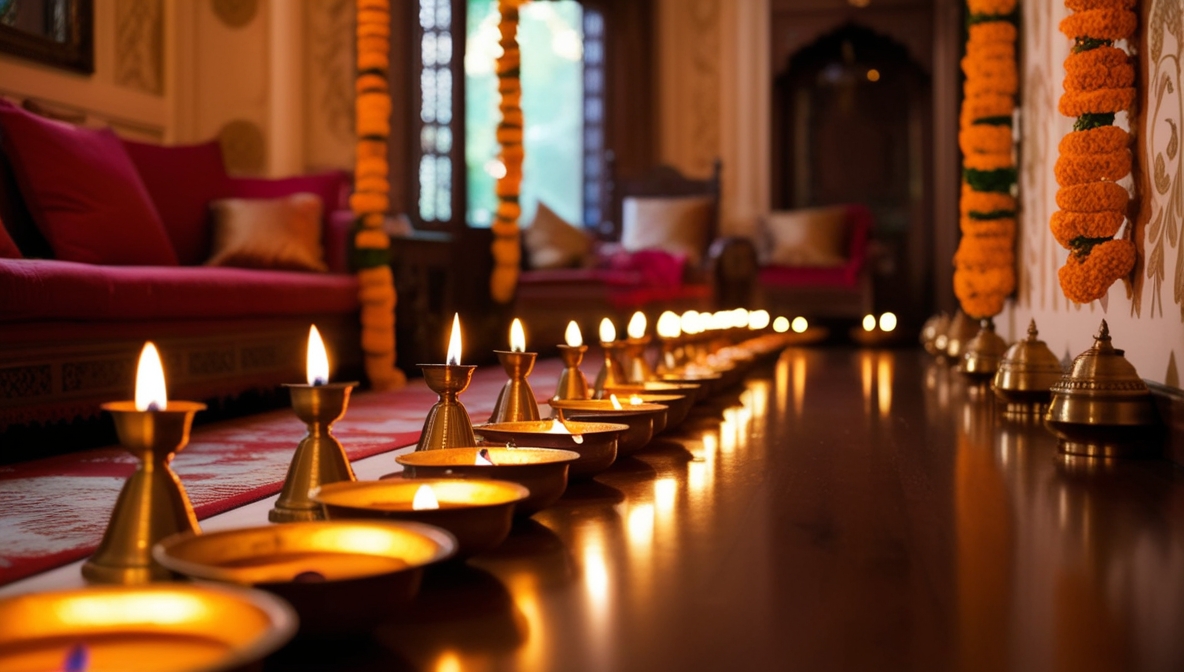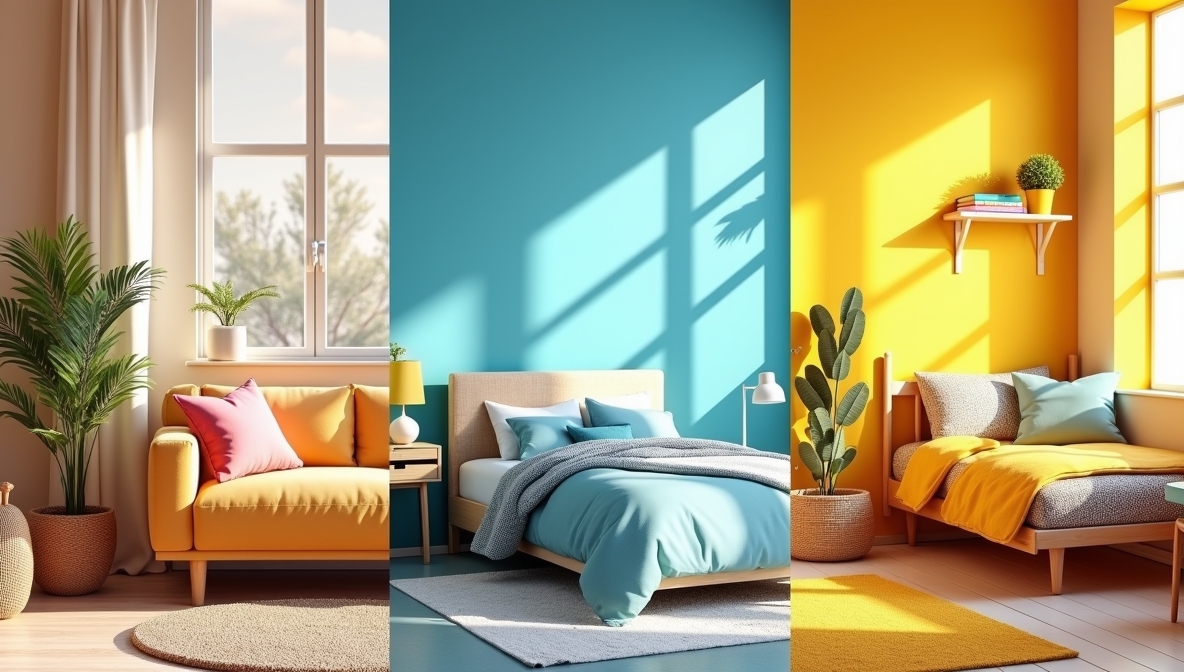
Choosing the right home colour combination isn’t just about picking your favourite shades; it’s about setting the mood, enhancing space, and creating a home that feels just right. Whether you’re redecorating one room or planning a complete interior makeover, understanding how colours work together can make all the difference.
In this guide, we’ll walk you through how to select the ideal interior colour combinations for every room, along with expert tips to avoid common mistakes and create a space you’ll love coming home to.
Why Interior Colour Combinations Matter

Colour affects everything, your mood, your perception of space, and even how comfortable a room feels. The right interior colour schemes can make a small room feel larger, bring warmth to an open space, or add a sense of calm to your bedroom.
Soft tones can be relaxing, while bold contrasts can energise a room. With thoughtful planning, your home can achieve both style and function, just by choosing the right shades.
What to Consider Before Finalising a Room Colour Combination

Before you choose your colour palette, take a step back and consider:
- Room size and lighting – Smaller spaces often benefit from lighter tones, while larger rooms can handle richer, deeper shades.
- Furniture and flooring – Your existing decor should complement your wall colour, not compete with it.
- Room purpose – A bedroom needs a different mood than a dining area or workspace.
- Paint finish – Matte, satin, or glossy finishes can subtly change how a colour looks in your room.
To get started with high-quality finishes and a wide variety of shades, explore interior emulsions specially formulated for beautiful, long-lasting results.
Living Room Colour Combinations That Work
Your living room is often the first space guests see, and it’s where you unwind after a long day. It should feel inviting, balanced, and comfortable.
Popular combinations include:
- Beige and olive green for a warm, earthy tone

- Charcoal and off-white for a modern, minimalist vibe

- Soft blue or Heavenly Day (1-33-3 from Indigo fandeck) and ivory for a calm and airy feel

When choosing a colour combination for the living room, consider how natural light enters the space and whether your furniture is light or dark-toned.
Bedroom Colour Combination Ideas for Restful Nights
Bedrooms should feel restful and private. The right bedroom colour combination can help improve sleep quality and mood.
- Muted lavender and white for a calming atmosphere

- Warm grey and soft peach for a cosy, inviting feel

- Cool mint and cream for a clean, refreshing look

Choose shades that pair well with your bedding, curtains, and lighting style.
Interior Colour Schemes for Every Room
Each room in your home serves a different function, and your colour choices should support that.
- Study/Workspace – Try muted greens or blues that promote focus and clarity

- Dining Room – Warm tones like mustard or terracotta create a cosy, welcoming space

- Kids’ Room – Use cheerful pastels or two-tone walls that grow with your child

- Bathroom or Entryway – Go with soft neutrals that reflect light and maintain a clean look

Planning the right interior design colour schemes ensures each space serves its purpose, both functionally and aesthetically.
Mistakes to Avoid When Selecting Interior Colour Combinations
Even the most beautiful colours can go wrong if not planned properly. Avoid these common mistakes:
- Ignoring how the colour looks under both natural and artificial lighting
- Choosing too many contrasting colours that make the space feel disjointed
- Forgetting to test a colour patch on the actual wall before full application
- Skipping the primer or proper wall preparation
If you want a flawless finish that enhances your selected shades, consider the Luxury Interior Emulsion by Indigo Paints, designed to deliver rich colour, stain resistance, and a smooth feel.
Expert Tips to Finalise Your Colour Palette
Feeling overwhelmed with options? Use these tips to simplify the process:
- Follow the 60, 30, 10 rule – 60% base colour, 30% secondary colour, 10% accent
- Test small patches on different walls and observe them at different times of the day
- Limit your palette to 3 or 4 coordinated colours for a clean, harmonious look
- Start with one room, often the living room or bedroom, and build your scheme from there
The more intentional you are, the more likely your colour choices will look cohesive and beautiful across the home.
Top Colour Trends for Interiors in 2025

Looking to stay current without sacrificing timeless appeal? These trends are gaining popularity this year:
- Warm neutrals like almond, clay, and beige
- Soft greens, sage, and earthy olives
- Dusky pinks and muted terracottas
- Classic grey and white monochromes
These modern interior colour combinations balance trend with longevity, giving your space a fresh yet grounded feel.
Bringing It All Together: Colour That Speaks Your Style

Your home deserves more than random wall colours; it deserves thoughtful, mood-enhancing, and functional colour planning. By considering room purpose, lighting, finishes, and furniture, you can create the perfect interior colour combination that reflects your lifestyle and personality.
FAQ
1. How do I choose the right colour combination for my home interiors?
Start by considering the room’s lighting, size, function, and furniture. Use a base colour for walls and complement it with 1–2 supporting shades. Testing samples on your wall is also highly recommended.
2. Which colour combination is best for a living room?
Neutral shades like beige, white, or grey paired with accents like green, blue, or terracotta work well. These create a cozy yet stylish setting suitable for guests and relaxation.
3. What are some relaxing bedroom colour combinations?
Soft tones such as muted lavender and ivory, warm grey with peach, or sage green with off-white help create a peaceful and restful bedroom environment.
4. How many colours should I use in one room?
Stick to the 60-30-10 rule: 60% dominant colour, 30% secondary, and 10% accent. This balance helps maintain visual harmony without overwhelming the space.
5. Which Indigo Paints product is best for interiors?
For a smooth finish and long-lasting performance, Indigo Paints’ Luxury Interior Emulsion is an excellent choice.


